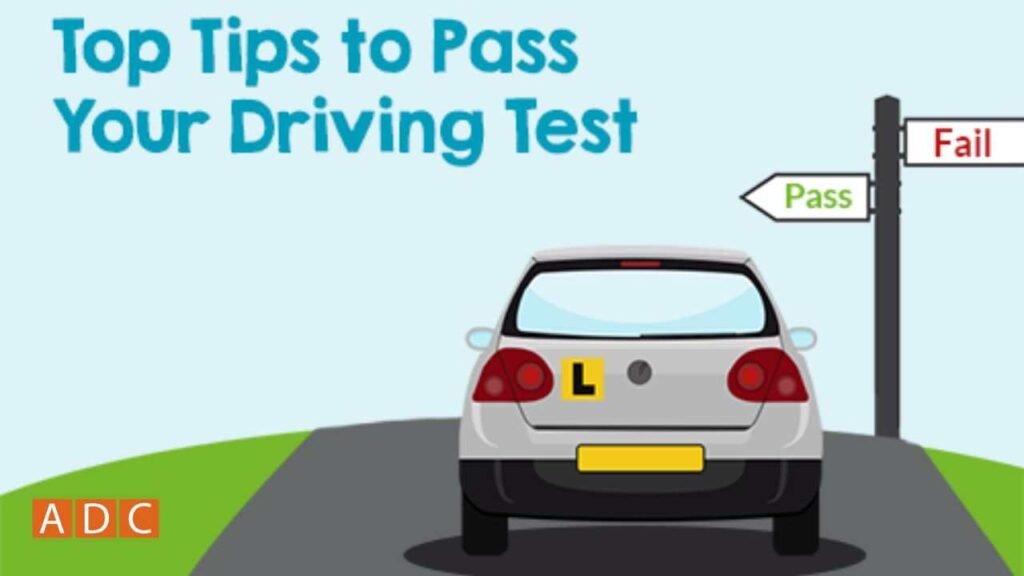Passing a driving test can be a stressful experience, but with the right preparation and mindset, you can increase your chances of success. Whether you’re a first-time driver or someone looking to refresh your skills, this comprehensive guide will provide valuable tips and techniques to help you pass your driving test on the first try. Let’s dive into the essential aspects of preparing for and acing your driving test.
Understanding the Driving Test
Before we understand the tips and techniques, it’s important to understand what the driving test involves. The driving test typically consists of two parts: a theory test and a practical test. The theory test assesses your knowledge of road rules, traffic signs, and safe driving practices, while the practical test evaluates your ability to operate a vehicle safely and effectively in various traffic conditions.
Preparing for the Theory Test
- Study the Driver’s Manual: The driver’s manual is your primary source for understanding road rules and regulations. Make sure to read it thoroughly and highlight key points.
- Practice with Online Tests: There are numerous online resources and practice tests available. These can help you familiarize yourself with the format and types of questions you’ll see.
- Understand Traffic Signs: Learn and memorize traffic signs, their meanings, and the actions you need to take when you see them.
- Review Safe Driving Practices: Understand the best practices for safe driving, including speed limits, right-of-way rules, and the importance of seat belts.
- Join a Study Group: If possible, join a study group or forum where you can discuss and review test materials with others who are also preparing for the test.
Techniques for Acing the Theory Test
- Take Your Time: Read each question carefully and make sure you understand it before answering. Don’t rush through the test.
- Eliminate Wrong Answers: If you’re unsure about an answer, try to eliminate the incorrect choices first. This can increase your chances of selecting the correct answer.
- Use the Process of Elimination: Narrow down your choices by eliminating the least likely answers.
- Stay Calm and Focused: Keep your nerves in check by taking deep breaths and staying focused on the task at hand.
- Review Your Answers: If time permits, review your answers to ensure you haven’t made any mistakes.
Preparing for the Practical Test
- Enroll in a Driving School: Consider enrolling in a reputable driving school. Professional instructors can provide valuable guidance and feedback on your driving skills.
- Practice Regularly: Consistent practice is key to becoming a confident driver. Try to practice in various conditions, including different times of the day and weather conditions.
- Familiarize Yourself with the Test Route: If possible, familiarize yourself with the routes commonly used for driving tests in your area. This can help reduce driving anxiety on test day.
- Master Basic Maneuvers: Practice essential driving maneuvers such as parallel parking, three-point turns, and lane changes.
- Learn Vehicle Controls: Get to know your vehicle’s controls, including how to adjust mirrors, use turn signals, and operate the windshield wipers.
Techniques for Acing the Practical Test
- Stay Calm and Confident: Confidence is crucial during the practical test. Remember that you’ve practiced and prepared for this moment.
- Follow Instructions Carefully: Listen to the examiner’s instructions and follow them accurately. If you’re unsure about an instruction, don’t hesitate to ask for clarification.
- Maintain Safe Speed: Drive at a safe and suitable speed for the road conditions. Avoid driving too slowly or too quickly.
- Use Mirrors and Signals: Regularly check your mirrors and use your signals when making turns or changing lanes.
- Be Aware of Your Surroundings: Stay alert and be aware of other road users, including pedestrians, cyclists, and other vehicles.
- Practice Defensive Driving: Identify possible dangers and be prepared to react safely. Maintain a safe following distance and be Be careful at crossings.
- Perform Smooth Maneuvers: Execute all driving maneuvers smoothly and confidently. Avoid jerky movements or sudden stops.
- Stay Relaxed: Try to stay relaxed throughout the test. Take deep breaths if you start to feel nervous.
Common Mistakes to Avoid
- Failing to Check Mirrors: Not checking mirrors regularly is a common mistake. Make it a habit to check your mirrors frequently.
- Improper Lane Changes: Ensure you use your signals and check your blind spots when changing lanes.
- Rolling Stops: Always come to a complete stop at stop signs and red lights.
- Speeding: Adhere to speed limits and adjust your speed according to road conditions.
- Not Yielding Right of Way: Understand and follow right-of-way rules to avoid potential collisions.
- Improper Parking: Practice parking in various situations, including parallel parking and parking in tight spaces.
- Ignoring Traffic Signs: Pay close attention to all traffic signs and signals and follow them accordingly.
Additional Tips for Success
- Get Plenty of Rest: Ensure you’re well-rested before your test day. A good night’s sleep can help you stay focused and alert.
- Eat a Healthy Meal: Have a nutritious meal before your test to keep your energy levels up.
- Dress Comfortably: Wear comfortable clothing and shoes that allow you to drive without any restrictions.
- Arrive Early: Arrive at the test centre early to give yourself time to relax and get mentally prepared.
- Bring Necessary Documents: Ensure you have all required documents, including your learner’s permit, identification, and any other paperwork specified by the test centre.
- Stay Positive: Maintain a positive attitude and believe in your ability to pass the test.
After the Test
- Reflect on Your Performance: Regardless of the outcome, take time to reflect on your performance. Identify areas where you did well and areas that need improvement.
- Seek Feedback: If possible, ask the examiner for feedback on your performance. This can provide valuable insights for future improvement.
- Continue Practicing: If you didn’t pass the test, don’t get discouraged. Continue practicing and work on the areas that need improvement.
- Celebrate Your Success: If you passed the test, congratulations! Celebrate your achievement and enjoy the freedom and responsibility that comes with having a driver’s license.
Conclusion
Passing your driving test is a significant milestone that requires preparation, practice, and a positive mindset. By following these driving test tips and techniques, you’ll be well-equipped to tackle both the theory and practical tests with confidence. Remember, driving is a lifelong skill, and the habits you develop now will contribute to your safety and the safety of others on the road. Good luck, and happy driving!
For Local SEO Company in Dubai visit.




